
Tennessee archaeology and native peoples
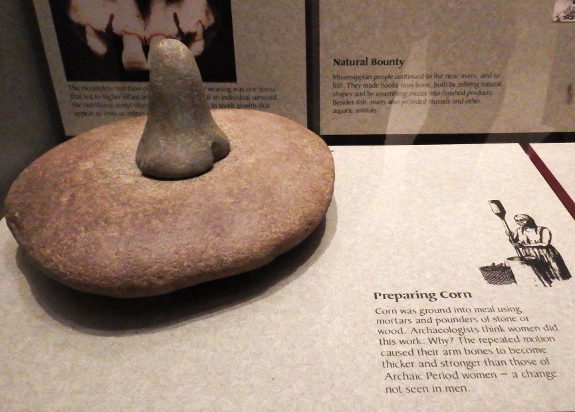
You'll be unsurprised to learn that my favorite exhibit at the McClung Museum
was the Native American wing. Not only is this one of my favorite
topics to learn about, but the exhibit was also based on archaeological
sites and artifacts from Tennessee, making the information very close to
home.
I particularly enjoyed
the way exhibit creators focused on how-we-know as well as what-we-know.
For example, from the exhibit above: "Corn was ground into meal using
mortars and pounders of stone or wood. Archaeologists think women did
the work. Why? The repeated motion caused their arm bones to become
thicker and stronger than those of Archaic Period women --- a change not
seen in men."
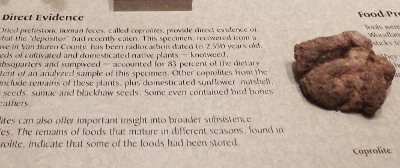 Or,
more succinctly, take a look at the coprolite to the left. Yes, that's
fossilized human poop used to analyze our ancestors' diets. I'd heard of
coprolites before, but had never thought of them in relation to our own
species. I mean, how exactly does human excrement become fossilized?
Or,
more succinctly, take a look at the coprolite to the left. Yes, that's
fossilized human poop used to analyze our ancestors' diets. I'd heard of
coprolites before, but had never thought of them in relation to our own
species. I mean, how exactly does human excrement become fossilized?
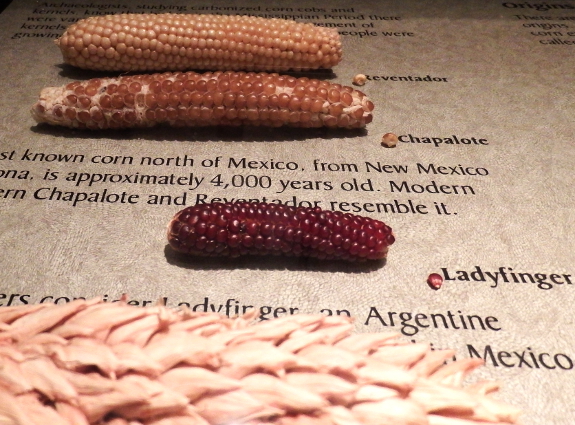
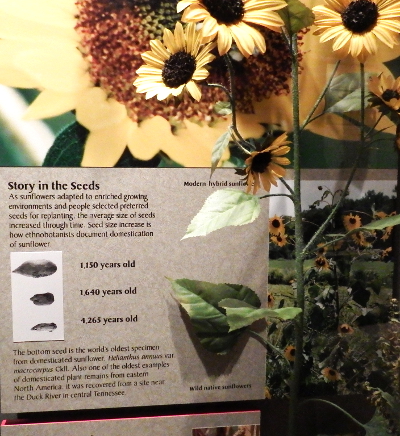 Much of the rest of the Native American agriculture exhibit contained information I'd read previously in books like 1491 and in more scholarly texts or at museums like Sunwatch. But I was particularly taken by one map (not shown here) that focused on North American cucurbits.
Much of the rest of the Native American agriculture exhibit contained information I'd read previously in books like 1491 and in more scholarly texts or at museums like Sunwatch. But I was particularly taken by one map (not shown here) that focused on North American cucurbits.
Guess which type of currently cultivated squash evolved very close to where we now farm? The crookneck squash...which just happens to be the one summer squash I find easy to grow organically in our bug- and fungus-rich environment.
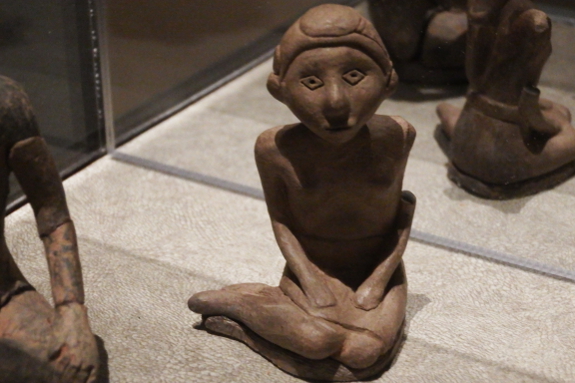
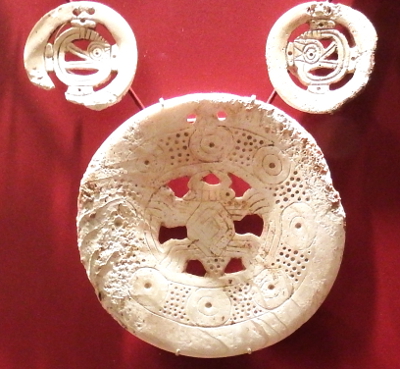 Of
course, the exhibit wasn't all about field corn and summer squash.
There were plenty of cultural tidbits as well, such as clay figurines
like the one above and ornaments like the one shown to the left.
Interestingly, the pendant is supposed to represent the Cherokee myth of
the water "spider," which brought fire on its back across the water
from gods to humans.
Of
course, the exhibit wasn't all about field corn and summer squash.
There were plenty of cultural tidbits as well, such as clay figurines
like the one above and ornaments like the one shown to the left.
Interestingly, the pendant is supposed to represent the Cherokee myth of
the water "spider," which brought fire on its back across the water
from gods to humans.
I put "spider" in quotes
in the previous paragraph because, from the image, I think this
particular pendant actually represents a water strider. Yes, both water
spiders and water striders do exist. Of the two, I think the latter is
more likely to carry fire over long distances since they skim rather
than scurry across the water.
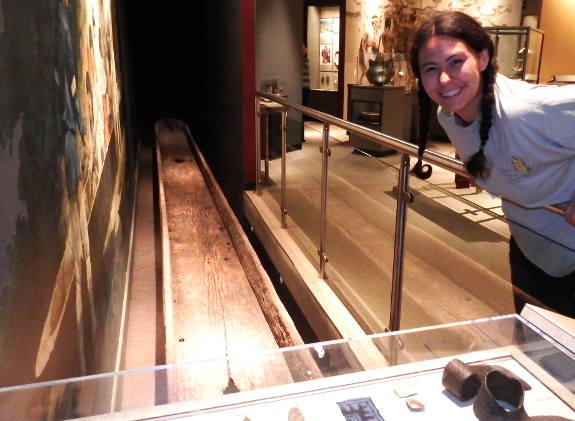
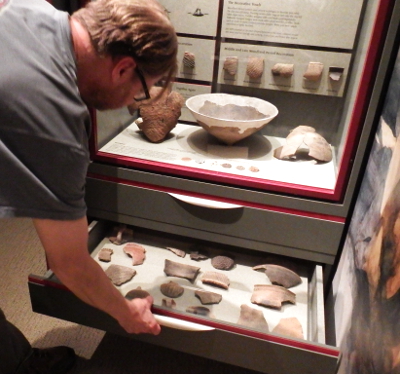 There
were other fascinating artifacts, too, like this 32-foot-long canoe
that was found drifting in the Tennessee River. Mark and I both
scratched our heads over the ungainliness of such a tremendous vessel
until I decided it must have been used like a Uhaul moving van. My guess
will have to stand since the exhibit gave no indication of the canoe's
real use.
There
were other fascinating artifacts, too, like this 32-foot-long canoe
that was found drifting in the Tennessee River. Mark and I both
scratched our heads over the ungainliness of such a tremendous vessel
until I decided it must have been used like a Uhaul moving van. My guess
will have to stand since the exhibit gave no indication of the canoe's
real use.
Overall, the McClung Museum's "Archaeology & Native Peoples of Tennessee" exhibit
may be the best I've seen on the topic. I only wish I'd skipped the
Mayans so we could have hit the room with my brain fully fresh. In fact,
if it wasn't such a schlep to get to Knoxville, I would have used up
all of my museum brainpower on that one room alone. If you're in the
area, I highly recommend giving it a try!
Want more in-depth information? Browse through our books.
Or explore more posts by date or by subject.
About us: Anna Hess and Mark Hamilton spent over a decade living self-sufficiently in the mountains of Virginia before moving north to start over from scratch in the foothills of Ohio. They've experimented with permaculture, no-till gardening, trailersteading, home-based microbusinesses and much more, writing about their adventures in both blogs and books.
Want to be notified when new comments are posted on this page? Click on the RSS button after you add a comment to subscribe to the comment feed, or simply check the box beside "email replies to me" while writing your comment.
- Remove comment
